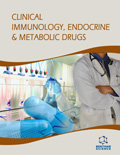Abstract
Objective: The purpose of this study is to observe neuroprotective effects of hypoxia preconditioning(HP)in primary culture newborn SD rat hippocampus neurons and 3-n-butylphalide(NBP) against oxygen glucose deprivation/ reoxygenation (OGD/R) injury, and investigate the possible mechanisms against ischemic reperfusion injury. Methods: After 7-days culture, the hippocampal neurons were initially divided into three groups: normal control group, simple hypoxia group and HP group. Later, we established OGD30min/R8h model. So, the hippocampal neurons were eventually divided into five groups: normal control group, OGD/R model group, OGD/R+3-n-butylphalide (NBP) groups(0.1μmol/L, 1μmol/L and 10μmol/L). Bcl-2 and neuroglobin (NGB) expression of cells in each group were analyzed by immunocytochemistry. The mRNA expression of Bcl-2 and NGB in each group was analyzed by RT-PCR. Results: The results showed that the protein and mRNA levels of Bcl-2 and NGB were significantly increased in the HP group compared to the hypoxia group (P < 0.01). In the OGD/R model, NBP groups also showed a significantly increased expression of proteins Bcl-2 and NGB compared to the OGD/R (P < 0.05); Different concentration of NBP drugs showed a significantly increased expression of proteins Bcl-2 and NGB with the increase in NBP concentration (P < 0.01). Conclusion: The neuroprotection of HP and NBP may share the same possible mechanisms and have endogenous neuroprotection by up regulating the mRNA and protein expression of Bcl-2 and NGB.
Keywords: 3-N-butylphalide, Bcl-2, hippocampal neurons, HP, neuroglobin, OGD/R.
Graphical Abstract
 26
26

